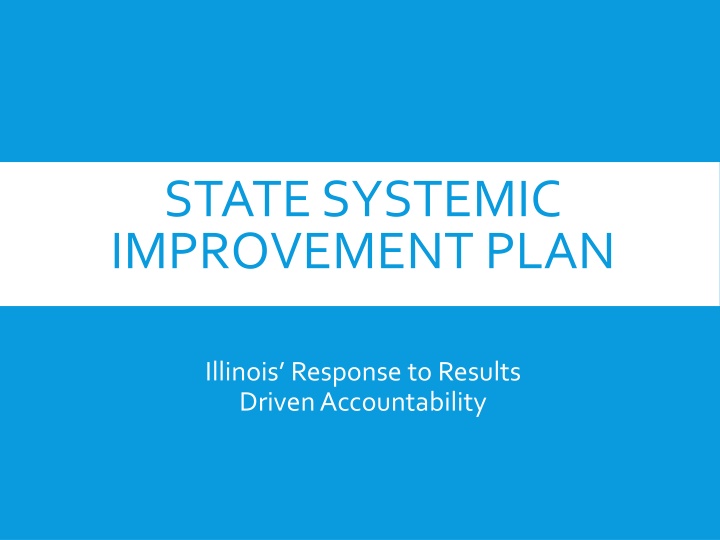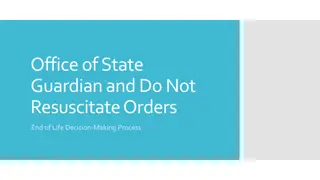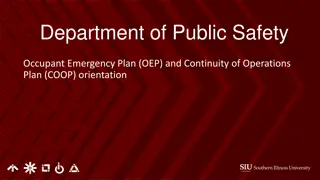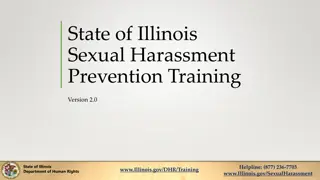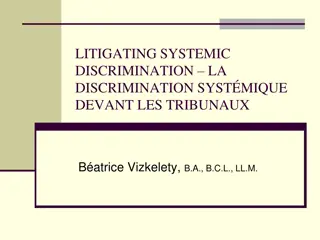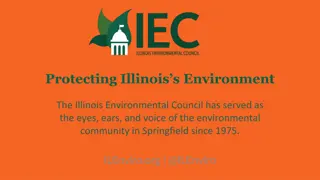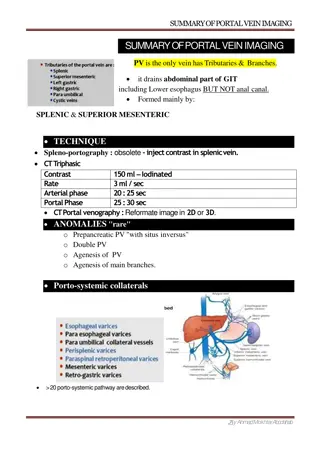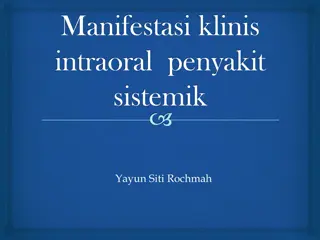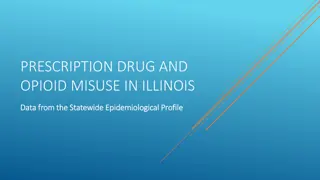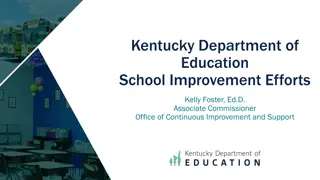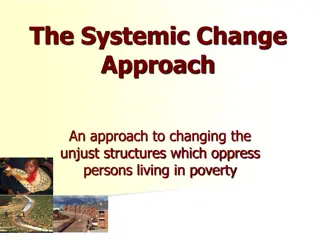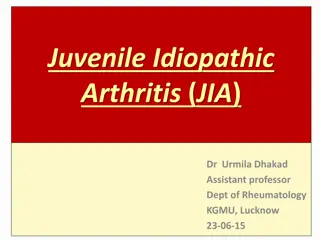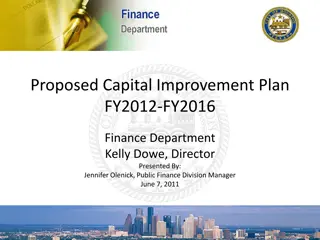Illinois State Systemic Improvement Plan Response
Illinois State Systemic Improvement Plan is focused on improving outcomes for infants and toddlers with disabilities and their families. The plan aims to create a balance between compliance and improved functional outcomes, using data-driven accountability tools. It includes analyzing data, identifying measurable result areas, developing improvement strategies, and increasing progress in knowledge and skills acquisition for children. The theory of action emphasizes family-centered practices and evidence-based interventions in early intervention services.
Download Presentation

Please find below an Image/Link to download the presentation.
The content on the website is provided AS IS for your information and personal use only. It may not be sold, licensed, or shared on other websites without obtaining consent from the author.If you encounter any issues during the download, it is possible that the publisher has removed the file from their server.
You are allowed to download the files provided on this website for personal or commercial use, subject to the condition that they are used lawfully. All files are the property of their respective owners.
The content on the website is provided AS IS for your information and personal use only. It may not be sold, licensed, or shared on other websites without obtaining consent from the author.
E N D
Presentation Transcript
STATE SYSTEMIC IMPROVEMENT PLAN Illinois Response to Results Driven Accountability
VISION FOR RESULTS DRIVEN ACCOUNTABILITY Previous vision: All states and local programs will be in 100% compliance Current vision: To create a balance between the focus on improved results and functional outcomes for young children with disabilities while considering compliance as it relates to those results and outcomes. The SPP/APR will be a critical tool for this process.
Office of Special Education Programs (OSEP) Results Driven Accountability The Process/Tool State Systemic Improvement Plan (SSIP), multi-year plan focused on improving results for infants & toddlers with disabilities and their families
RESULTS DRIVEN ACCOUNTABILITY (RDA)
SSIP THREE PHASES: PHASE 1 Phase 1 Analysis (submitted April. 1, 2015) Data analysis to determine measurable result & root cause Infrastructure analysis to support improvement and build capacity Identification of a measurable result area (must be child focused) Development of coherent improvement strategies Creation of a theory of action
STATE-IDENTIFIED MEASURABLE RESULT (SIMR) To increase the percentage of infants and toddlers with disabilities who demonstrate greater than expected progress in the acquisition and use of knowledge and skills in our pilot areas to 0.11% (to 67.31%) by 2025.
ILLINOIS THEORY OF ACTION FOR PART C EARLY INTERVENTION (EI) IF THEN THEN THEN Focused and consistent policies, procedures, manuals and forms CFCs and providers will have materials to support the practices they learned through training and TA and will use available data to guide decision-making when engaging families in EI processes The Lead Agency ensures policies, procedures, manuals and forms reflect family centered practices and desired practices for data collection and use CFCs & providers will be more responsive to the child and family s evolving strengths and needs Infants and toddlers will demonstrate a greater acquisition and use of knowledge and skills Providers will use EBPs to support families in promoting the development of I/Ts receiving EI services Providers will increase their knowledge about best practices in early intervention to increase I/T acquisition of skills and to support families in day to day activities that enhance child skills Providers receive training on EBPs (family capacity building & engagement), Child Outcome process and Infant/Toddler (I/T) Development Provider Training & Technical Assistance (TA) Families will increase their use of daily activities to support their I/Ts development Families will increase their ability to make informed decisions related to their children and increase their capacity to support their children s development External and Internal Knowledge of Family- Centered Practices Referral sources and EI stakeholders understand the role of families in early intervention processes
SSIP THREE PHASES: PHASE 2 Phase 2 - Plan (submitted April 1, 2016) Infrastructure Development Support for local implementation of evidence-based practices (EBPs) Evaluation
THE GOAL OF LEADERSHIP TEAMS Fidelity of implementation of EBPs that leads to positive outcomes for children, families, providers, and programs
WHY AN IMPLEMENTATION TEAM? No Implementation Team Implementation Team To Making it Happen From Letting it Happen 14% 17 Years 80% 3 Years Improvement in Outcomes Sources: Fixsen, Blase, Timbers, & Wolf, 2001 Balas & Boren, 2000 Green & Seifert, 2005 Saldana & Chamberlain, 2012
SSIP PLANNING GROUPS Large SSIP Stakeholder Group Leadership Team Workgroup Performance Support Workgroup Messaging Workgroup PD/TA Workgroup Evaluation Workgroup Local Leadership Teams
SSIP THREE PHASES: PHASE 3 Phase 3 - Implementation and Evaluation (submitted April 1, 2017) Implementation of evidence-based practices Ongoing evaluation of activities & data-informed revisions
EARLY INTERVENTION RESULTS/ OUTCOMES We have two primary ways of assessing the results realized from participating in the Early Intervention system: Child Outcomes Family Outcomes
CHILD OUTCOMES PROCESS Child outcomes provide information about a child s progress from system entry to exit (the result of participating in the system). Child outcomes ratings are completed at initial, annual, and exit IFSP meetings. Service coordinators guide the discussion, seeking a rating consensus by the multidisciplinary team. The IFSP team compares each child s functioning to same-age peers on the following three outcomes: positive social-emotional skills, including social relationships; acquisition and use of knowledge and skills; and use of appropriate behaviors to meet needs.
CHILD OUTCOMES PROCESS Children s performance is assigned a rating at entry and exit Comparison of performance from entry to exit (matched pair) is put into a category that describes the child s progress Categories range from did not improve functioning to maintained functioning comparable to same-aged peers Progress categories are collapsed into two summary statements: SS1- Children who substantially increased their rate of growth by the time they exited the program SS2- Children who exited program functioning within age expectations
FAMILY ENGAGEMENT Family engagement efforts are built around five selected Division for Early Childhood Recommended Practices E1. Practitioners provide services and supports in natural and inclusive environments during daily routines and activities to promote the child s access to and participation in learning experiences. F1. Practitioners build trusting and respectful partnerships with the family through interactions that are sensitive and responsive to cultural, linguistic, and socio-economic diversity. INS4. Practitioners plan for and provide the level of support, accommodations, and adaptations needed for the child to access, participate, and learn within and across activities and routines. INS13. Practitioners use coaching or consultation strategies with primary caregivers or other adults to facilitate positive adult-child interactions and instruction intentionally designed to promote child learning and development. TC2. Practitioners and families work together as a team to systematically and regularly exchange expertise, knowledge, and information to build team capacity and jointly solve problems, plan, and implement interventions. Leadership teams (LT) determine their own capacity-building needs in regard to these practices and then work towards meeting them The LT then works to support interventionists use of these practices through assessment and ongoing professional development. The LT has access to training and support tools to further this effort.
